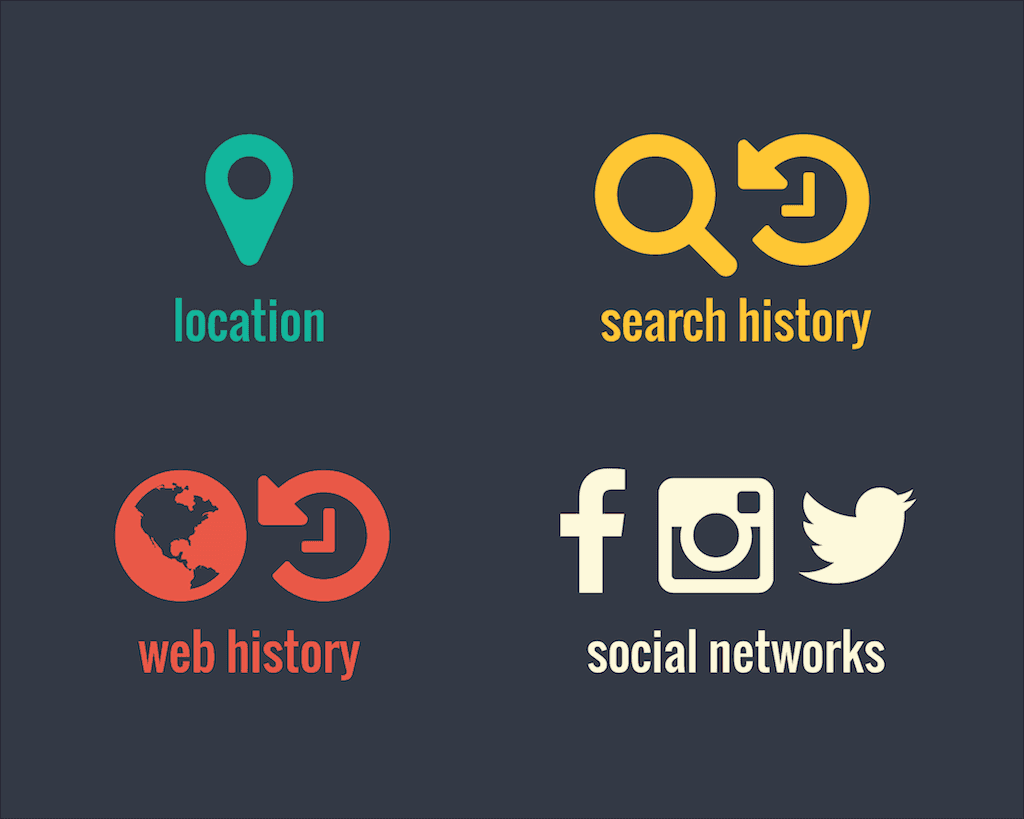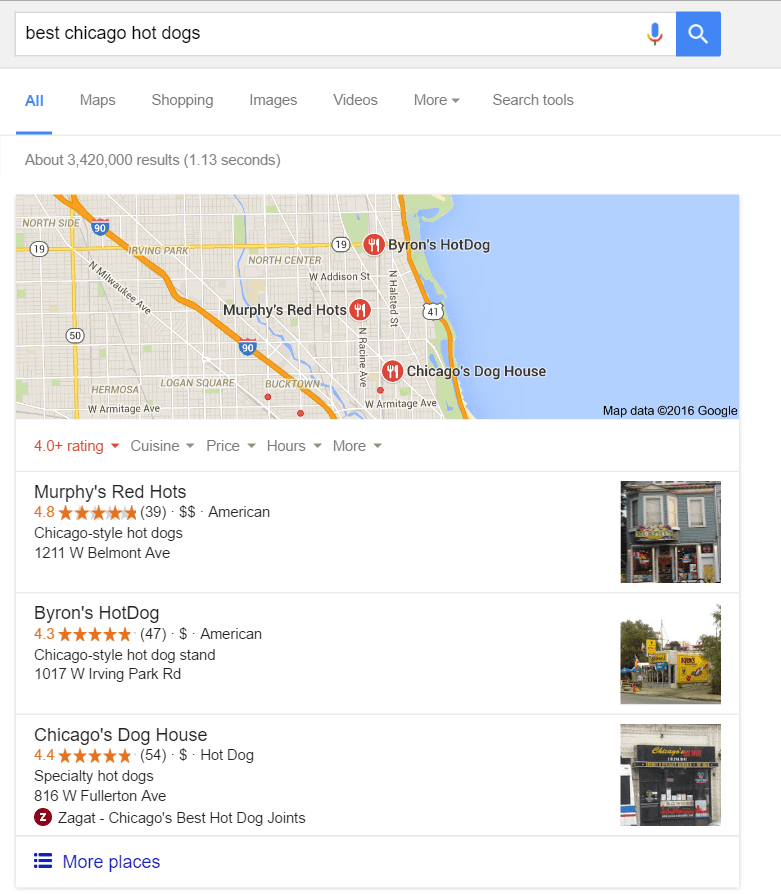How Your Site Can Make The Most of Personalized & Local Search

Let’s run through a common scenario we see in the digital marketing world. You’ve hired an SEO company to improve your site’s organic search presence and they deliver you a monthly report from Google Search Console that shows your average position increasing for your core keywords. Sweet!
Interested to see your beautiful, boosted ranking in the SERPs (Search Engine Results Pages), you search the relevant term and notice something shocking. Your search position is lower than what your agency has reported. Gasp. Shock. Awe.
But wait—your SEO company isn’t lying to you. This discrepancy between the Google Search Console stats and your own search is commonplace now. This is life in the era of personalized search results.
What factors influence personalized search results?
Personalized search results are nothing new. Originally introduced as a Google beta in 2004, it was rolled out as a part of all Google searches in 2009.
Since then, Google has continued to expand the role of personalized search in an effort to provide users with the search results that Google thinks are most immediately relevant to them at that moment.
This means a wide variety of factors can influence what your SERP page ultimately looks like, including:
- Location
- Search history
- Web history
- Social networks
Depending on which sites you’ve previously visited and where you are when you search something, you could see vastly different results than someone else. That’s why it can differ from the numbers your agency reports.
The average position that your SEO company reports on is an average of where your page appears on the page for a given search. Makes total sense now, right?
Location, location, location
A lot of the above factors (like search history, web history, or social networks) can’t be reliably manipulated or accounted for.
However, location has implications beyond your average position in the SERP. It’s the element of search personalization that plays the largest role in the lives of most businesses.
With as many as 3 out of 4 customers opting to shop locally when they can find information about a brick-and-mortar store from their smartphone, making sure that you’re properly optimized for local search continues to play a huge role in the success of your business.
So what tools can help increase your local visibility?
1) Fully optimize your Google My Business listing
One of the easiest and most immediate changes you can make to improve your organic presence is to fully optimize your Google My Business Listing.
This is the information that will be featured on Google Maps, and, more importantly, on the all-important “snack-pack” of local search results that pop-up for any kind of localized search query.
If you’re included in the snack-pack, you’ll be one of the first businesses that a potential customer sees—even if under normal circumstances large competitors push you to the bottom of the SERP.
Of course, the usual ranking factors (backlinks, content, CTR, etc.) all play a role in whether you’re included in the local snack pack. Still, it’s incredibly important that you list all of your business’s basic information. Make sure you have the correct address, phone number, hours, business category and description.
Not only will Google evaluate the accuracy of your business’s information in snack-pack placement, but this is the information that will ultimately lead customers to actually come to your store and spend money.
In the past year, the local snack-pack has become increasingly competitive for organic users. First, Google shrank the snack-pack from seven listings to three in an effort to keep their search experience identical across mobile and desktop platforms. Recently, they announced that one of the three snack-pack listings will be a sponsored ad that has nothing to do with organic rankings.
While the promoted pin update is bad news for purely organic strategies, it’s accompanied by news that Google will be increasing the amount of information that a business can display on their local page.
New Google local pages will allow businesses to communicate to users whether certain products are in stock, as well as advertise promotions and sales from their My Businesses listing. This presents a great opportunity for businesses—but, naturally, it means that fully optimizing a Google My Businesses listing is more complicated than ever before.
2) Get listed in directories
While your Google My Business page is your most direct route to the top of the SERP page, it’s not the only off-website listing that can help you generate more business.
It’s also extremely important to have accurate information listed on third party directories and review sites such as Yelp. These sites have substantial domain authority and popularity, which means that they often outrank local business sites for searches such as “best barbers Chicago.”
Having an accurate Yelp page with good reviews can help you drive business even if your personal site isn’t cracking Google’s first page.
3) Create location-specific content
If you run a business that operates in multiple locations or services multiple neighborhoods, it can be advantageous to build out pages that speak to specific locations.
For instance, if you were a Chicago plumber you might find yourself getting creamed when trying to rank for high-competition terms such as “Chicago plumber.” By creating pages that feature specific neighborhoods – such as “Logan Square Plumbing” – you can target a more specific market where you’re more likely to rank well and benefit from Google’s efforts to show users location-based results.
This may sound like an easy process – but a location page strategy can be disastrous if it’s poorly implemented. Google is smart enough to recognize thin and duplicate content. Creating the same page over and over again and simply swapping out the relevant location will ultimately hurt you much more than help you.
Instead, you’ll need to build out location pages that feature unique, location-specific data that will be helpful for the user. Sound difficult? I think so too. If you want some help check out our copywriting services.
Wait, so that’s all I need to succeed in local SEO?
Not exactly. If only it were that simple! Succeeding in local and personalized search requires a lot of the same things as regular organic success. You’ll need a strong backlink profile, great content, and a healthy website if you’re hoping to get onto the first page.
But if you’ve been following the typical SEO playbook and are still having trouble bringing in local traffic, these tips will help increase your visibility.
So make sure to update your listing in Google My Business and all relevant directories, and build out some (useful and unique!) location-specific content. If it sounds like too much to tackle alone I can recommend a few experts that might help.
—
Any personalized search insights of your own? Share them with us! Tweet us at @Perfect_Search.
Itching for some more genius SEO tips from Benn? Check out his guide to the 6 most common site migration mistakes now.

Benn Myers is a Northwestern University alum who came to Chicago from Boulder, Colorado. His lifelong affinity for Nerds Ropes leaves him wishing he could be their spokesperson, but in the meantime he’ll ponder whether Voltaire’s real life wit would live up to the hype.

